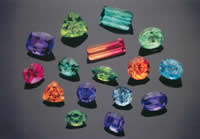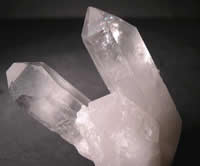Difference between Gems and Crystals
Key Difference: Gemstones are rare pieces of minerals that are found in the ground, which are then cut and polished to be used in jewelry and other decorative pieces. Crystals are pure substances whose atoms, molecules, or ions are arranged in an ordered pattern, where they extend in all three spatial dimensions. A gem can be a crystal, while a crystal cannot be called as a gem.
Gemstone and Crystals are both used in various applications in today’s world. While gemstones are primarily used in jewelry and decoration pieces, crystals can be used in various applications such as healing, jewelry, vases, scientific purposes, etc. A gem can be a crystal, while a crystal cannot be called as a gem.

Gemstones are rare pieces of minerals that are found in the ground, which are then cut and polished to be used in jewelry and other decorative pieces. Not all gems are minerals, such as lapis lazuli, a rock, and amber or jet, which are organic materials. A gemstone can also be known as precious or semi-precious stones. Precious stones include diamonds, emerald, ruby and sapphire, while the rest are qualified as semi-precious stones. Gemstones are classified by their color, translucency and hardness. Gems can also come with mineral bases like diamonds or rubies and with organic bases like amber. Today, geologists use the chemical composition of a gemstone to classify it into groups, species and varieties. The price of the gemstones depends on the rarity, color, composition, hardness and cut.

Crystals are pure substances whose atoms, molecules, or ions are arranged in an ordered pattern, where they extend in all three spatial dimensions. The process of crystal formation via mechanisms of crystal growth is called crystallization or solidification. Not all crystals need to be in solid formation, where water freezing also begins with small ice crystals that grow. Crystal symmetry requires that the unit cells stack perfectly with no gaps. Crystals are classified as Hexagonal, cubic, orthorhombic, tetragonal, rhombohedral, and monoclinic shapes. Crystals are light in color and are mostly translucent. The color of crystal is determined by the light passing through it. Crystals are less expensive compared to gemstones. Salt and snowflakes are the most common types of crystals that are encountered.
|
|
Gems |
Crystals |
|
Definition |
A gemstone or gem is a piece of mineral, which is cut and polished and used to make jewelry or other decorations. Can be a crystal |
A crystal is a solid material whose constituent atoms, molecules, or ions are arranged in an ordered pattern extending in all three spatial dimensions. Cannot be a Gem |
|
Composition |
Rare minerals that are found on the earth. Composition differs according to type of mineral. Some come with mineral bases like diamonds or rubies and with organic bases like amber |
Crystals are solids that have atoms, ions and molecules fixed in a regular order, which extend in three dimensions |
|
Characteristics |
Refractive index, dispersion, specific gravity, hardness, cleavage, fracture, and luster |
Shape, atom composition, bonds and defects |
|
Classification |
Chemical composition and their crystalline structure |
Hexagonal, cubic, orthorhombic, tetragonal, rhombohedral, and monoclinic |
|
Color |
Blue, red, green, etc |
Light reflections through the crystal |
|
Price |
More expensive |
Less expensive |
|
Uses |
Mainly jewelry |
Various uses such as healing, jewelry, dishes, show pieces, vases, etc. |
|
Examples |
Obsidian, Lapis Lazuli, Jasper, Ruby, Emerald |
Snow, amethyst, quartz, salt, diamond |
Image Courtesy: gemstones-guide.com, completeyoga.co.za









Add new comment